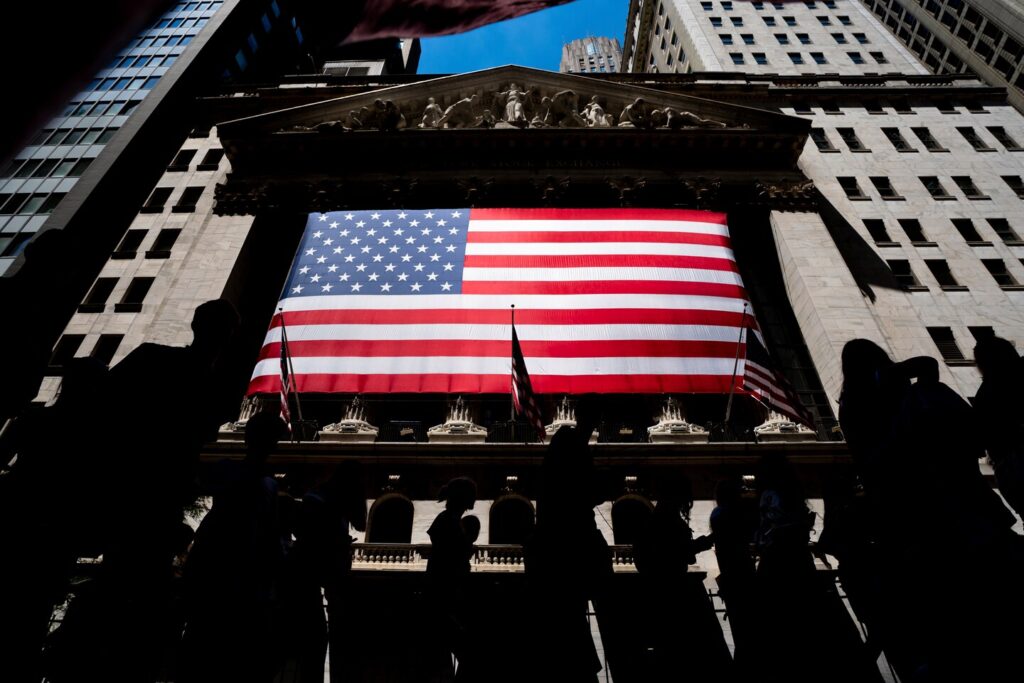
The surging cost of commodities has played a major factor in rising prices, with the gas pump perhaps been the most frequent reminder of inflation’s squeeze for many Americans. The national average stood at $4.80 on Tuesday, according to AAA data, or roughly 50 percent more than last year.
Oil prices soared this spring on fears that the Russian invasion of Ukraine would lead to supply shortages and global disruptions. They continued to climb after the European Union moved to cut off Russian crude, as part of a sweeping array of sanctions to isolate President Vladimir Putin and punish his allies in Moscow and abroad.
But Tuesday, oil prices fell sharply, moving below $100 a barrel for the first time since May. For motorists, the sudden plunge is double-edged: If oil stays below $100, gasoline could fall as much as 40 to 60 cents, according to Patrick De Haan, chief of petroleum analysis for GasBuddy.
It will take weeks for such a drop to be realized at the gas station and, even then, some other geopolitical event could send oil prices spiraling back up. More concerning to analysts is that oil prices are falling because of grim economic projections, serving as sort of a canary in the coal mine for declining economic activity across the board.
There already are signs of a pullback: U.S. demand for gasoline, measured as a four-week moving average, dropped to 8.93 million barrels per day as of June 24, a decline of 2.6 percent compared with a year ago, according to the Energy Information Administration.
“While no one is wishing for a recession, the fact of the matter is that economic slowdown is one of only two ways to meaningfully bring down oil prices from current levels,” said Pavel Molchanov, director and equity research analyst at Raymond James, an investment bank and financial services company.
On Wall Street, meanwhile, investors attempted to regroup after stocks closed out their worst six-month stretch to start a year since 1970 in the face of historically high inflation, rising interest rates and global supply chain disruptions brought on by the Russian war and the coronavirus pandemic.
More than $8 trillion has evaporated from the stock market this year.
Changing monetary policy has fueled much of Wall Street’s decline this year: The Federal Reserve has raised its benchmark interest rate three times in 2022 and signaled that four more increases are on deck. The most recent hike, in June, came in at three-quarters of a percentage point, the Fed’s largest since 1994.
On Tuesday, the Dow Jones Industrial closed down more than 129 points or 0.4 percent, after staging a comeback from deep losses. The S&P 500 index ticked up 0.2 percent, while the tech-heavy Nasdaq swelled nearly 1.8 percent.
Energy companies got pummeled after oil prices plunged — West Texas Intermediate crude, the U.S. benchmark, slumped more than 8 percent to $99.70 a barrel, while its global equivalent, Brent crude, fell 9.2 percent, to trade near $103. Shares of ConocoPhillips and Marathon Oil Corp slid by more than 6 percent, Halliburton fell by 8 percent, while Occidental Petroleum Corp. decreased by 2.2 percent at the closing bell.
Lindsey Bell, Ally’s chief markets and money strategist, said in an email on Tuesday the big unknown is how deep or widespread the stock market slowdown will be. “With a 20% decline in the first half of the year, stocks are pricing in what could be a mild to medium sized recession,” she said.
The bond market is also indicating tough times ahead. The price of short-term debt was suddenly more expensive on Tuesday than longer-term debt, an unusual occurrence that tends to happen when investors are bracing for a recession.
Economists also will be closely tracking corporate earnings this week. Eighteen companies in the S&P 500 will release quarterly results in the days ahead, providing crucial data into how businesses are coping with rising prices and borrowing costs.
The outlook executive teams offer for the next quarter will be especially useful, Nick Raich, chief executive of the Earnings Scout, an independent macroeconomic research firm, said in an email Tuesday.
Investors are also monitoring geopolitical events. Secretary of State Antony Blinken will meet with Chinese Foreign Minister Wang Yi this week, according to senior State Department officials, as the Biden administration weighs lifting tariffs on China to dampen inflation. But officials appear to be conflicted on what path to pursue, as inflation soars to 8.6 percent.
Treasury Secretary Janet L. Yellen has told lawmakers that some of the Trump-era tariffs were strategically questionable and “paid by Americans, not by the Chinese.” But U.S. Trade Representative Katherine Tai has voiced a conflicting view to Congress, saying, “The China tariffs are … a significant piece of leverage, and a trade negotiator never walks away from leverage.”
Investors, meanwhile, are pulling back on the belief that the potential rollbacks of the tariffs on Chinese goods may not materialize, said Ally’s Bell.
As world leaders grapple with ongoing financial tensions, American consumers have become increasingly less confident about the economy, with consumer sentiment measures plunging to record lows.
Despite the souring sentiment, however, American consumers continue to shell out for goods and services, in what has shown to be a bright spot for the U.S. economy. But economists say there are signs that is beginning to change, as consumers feel the effects of higher interest rates and dip into their savings to keep their household budgets afloat.
The broad deterioration in consumer sentiment “may be a sign that consumers intend to pull back from spending amid increasing fear of a more challenging economic environment on the horizon,” according to a new research note by the investment management firm Glenmede.
The upcoming labor market figures this Friday also loom large for economists and political leaders. In recent months, low unemployment has proved to be a resilient pillar of the domestic economy. But the Fed’s aggressive moves to raise interest rates could spur job losses.

